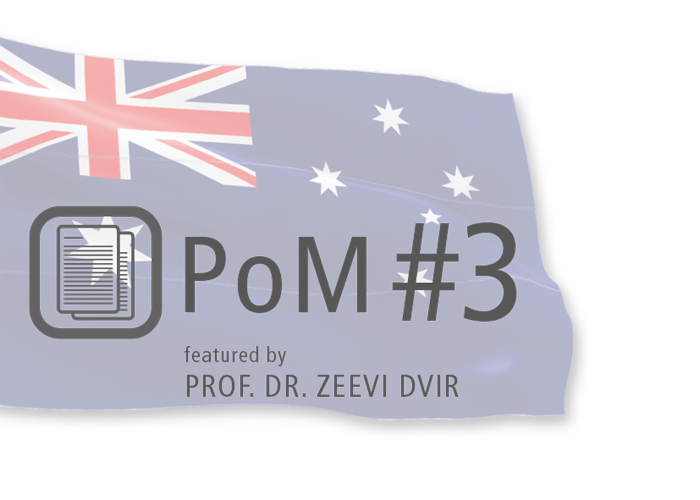
Prof. Dvir’s Commentary:
The assessment of thigh muscles performance and its role in ACL deficiency, or rehabilitation following reconstruction of the ligament, is perhaps the most studied single pathology in the isokinetic literature. Hundreds of papers which investigated either the deficiency or the surgical outcomes described a general extension and flexion insufficiency both in terms of contraction modes and test velocities.
However, a specific place has been reserved for strength ratios, defined either between- or within-side. For the former, the analysis related to the involved (i) and sound (s) side in concentric (con) and /or eccentric (ecc) modes e.g. Qiecc/Qsecc. For the latter, the comparison involved the widely quoted Hcon/Qcon ratio, the less applied Hecc/Qecc and probably the much more informative ‘dynamic control ratio’ (DCR) or ‘functional ratio’: Hecc/Qcon. Recently the DCR was expanded to include the value of the moment and knee flexion angle at the equilibrium point, DCRe, i.e. when the DCR is equal to unity (1.0)
However, the results emerging from numerous studies, especially those relating to postoperative rehabilitation have not been clear-cut, reflecting the diversity of surgical and rehabilitative interventions. Furthermore, the studies point out to a lack of standardization, in the test protocols as well as in the outcome measures. A good example for this situation is indeed given by the two excellent papers of this month, both originating from Australia. In the paper by Hohmann et al., the HQ ratios were examined in individuals with ACLD and following ACLR (using PTBG), both within and between sides. The test protocols consisted of concentric and eccentric contractions, at 3 velocities. However, the results did not include reference to either the DCR or DCRe parameters. In the paper by Ebert et al, the ACLR was based on individuals who underwent hamstring autograft, while the isokinetic test was limited to the use of a single, concentric, velocity.
As both papers demonstrate, within the constraints of the study, isokinetic assessment provides a valid and powerful tool for assessing the functional status of their cohorts, either as independent outcome measures or in conjunction with other performance-based test findings. Clearly, if both research groups were utilizing the same isokinetic protocol and outcome measures, the findings could possibly be more telling. In this context, one can see the important and inevitable need for standardization in isokinetic testing, particularly with respect to well-defined patient groups.
Read the complete study of Hohmann et al here
Read the complete study of Ebert et al here
These papers may be purchased directly from the publisher.
More information on CON-TREX® units
Citation
Hohmann E, Tetsworth K, Glatt V. The hamstring/quadriceps ratio is an indicator of function in ACL-deficient, but not in ACL-reconstructed knees. Archives of Orthopaedics and Trauma Surgery, doi: 10.1007/s00402-018-3000-3, 2018.
Ebert JR, Edwards P, Yi L, Joss B, Ackland T, Carey-Smith R, Buelow J-U, Hewitt B. Strength and functional symmetry is associated with post-operative rehabilitation in patients following anterior cruciate ligament reconstruction. Knee Surgery Sports Traumatology and Arthroscopy, 26:2353-2361, 2018.
Paper of the Month – the initiative
The main objective of the PoM initiative is to serve as an update forum for users of isokinetic dynamometry. Recent papers, generally of the last 3 preceding months, relating to this technology and its applications will be reviewed regularly by Prof. Zeevi Dvir, who will select those that in his opinion present an important/relevant contribution to the science of isokinetic testing and conditioning. The selection will consider the novelty, scientific rigor and possible applicability of the study without any prejudice, reflecting PHYSIOMED’s commitment to the highest standards the company stands for as a world leader in isokinetic technology.
Based at the Dept. of Physical Therapy, the Sackler Faculty of Medicine, Tel Aviv University, Prof. Dvir serves also as a Non-teaching Adjunct Professor at the Biomechanics and Ergonomics Lab, School of Kinesiology and Health Studies (SKHS), Queen’s University, Canada.
Prof Dvir is an international leader in isokinetics. He is the author of the widely recognized leading title in the field “Isokinetics: Muscle Testing, Interpretation and Clinical Applications” (Churchill Livingstone, 1st ed., 1995; Elsevier 2nd ed., 2004). He is also the Editor-in-Chief of Isokinetics and Exercise Science (IOS Press, Amsterdam, Holland) since 1998, the only international journal dedicated to the science and practical aspects of this technology. Prof. Dvir has published more than 60 papers on isokinetics. He coined the terms Dynamic Control Ratio (DCR), which is also known as the functional ratio. The DCR has mostly been applied in the context of muscular balance around the knee especially with respect to ACL deficiency and reconstruction and is expressed as the ratio: Hecc/Qcon. Prof. Dvir was also the first to describe the DCE (the Difference between the high and low velocity Ecc/Con ratios) to assess submaximal effort, a core concept in medicolegal analysis of muscular weakness. A US patent he owns paved the way to a series of papers describing the utilization of Short Range of Motion isokinetic testing and conditioning.